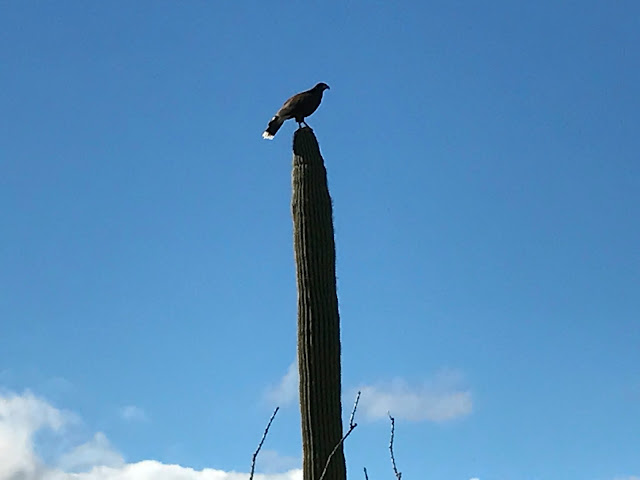It was a beautiful Saturday in late October and we went out on the last convertible drive of the year. So, where will we go? We were off to Grand Saline, Texas to see the Salt Palace Museum and the East Texas Gator and Wildlife Park. It was a beautiful drive and the Museum and Park were a hoot.
The Salt Palace is a building that is made with two outside walls made of pure rock salt. The palace sits on one of the largest and purest salt domes in the US. The supply of salt from this dome is predicted to last another 20,000 years.
 |
| The first Salt Palace |
The first Salt Palace was built to look like the Alamo in 1936 and was a solid salt structure.
 |
| The second Salt Palace |
The second Palace was built in 1960 and was built from Salt blocks.
 |
| The third Salt Palace |
The third structure was built in 1975 as a centerpiece for the annual Salt Festival and was built in the current building's location. It was built on the cement foundation of the the first gasoline station in Grand Saline. It was built of solid salt rocks donated by Morton Salt Company the current owner of the salt dome.
 |
| The current Salt Palace and Museum. |
In 1993 the tiny Salt Palace was deteriorating because of the weather (salt does melt or dissolve when wet). They replaced the building and made some construction changes including an overhanging roof to protect the salt walls. The newest building is four times larger and is re-salted as needed. It is decorated and renovated to accommodate a Museum and Visitors Center.
 |
| Items in the museum in the Salt Palace. |
 |
| Old salt package styles in the Museum. |
 |
| This is the Christmas Ornament I bought at the Museum. I try to buy an ornament at all the historical sites we visit. This ornament has been discontinued, so I have one of the last ones sold. |
The historical theory is that this area of East Texas and Western Louisiana was once a part of the Gulf of Mexico. The seas dried up, leaving layers of salt and as the earth's layers shifted and moved it covered the salt with earth. Then there was some source of heat, maybe volcanic activity, that melted the salt and all the minerals or fossils in it burned up. The pressure caused the molten salt to push to the surface. The salt in this area was used by the Caddo Indians in as early as 800AD, and used by the Cherokee Indians until 1839.
 |
| Inside the salt dome. |
Salt production started in 1845 by John Jordan and A.T McGee. Then Morton Salt came to Grand Saline in 1920. Before underground mining started in 1931, Morton processed salt water from deep brine wells in steam broilers.
 |
| The Morton Salt plant in Grand Saline, Texas. |
 |
A truck must have leaked as it was leaving the plant. If I was still living in the North I would have thought it was snow on the ground.
|
The salt mined from Grand Saline is one of the purest salt in the world. It is 99.5 % pure and the mine is blessed by a Rabbi for the process of kosher salt. The salt crystals are so clear they look like glass.
 |
| This is a chunk of salt from the mine. It looks like crystal. |
The second spot on our trip was the East Texas Gator and Wildlife Park. This is a little, out of the way, park that raises alligators, has a petting zoo barnyard, a duck/geese/swan pond, and other random reptiles and small animals.
 |
| This was the entrance to the Gator and Wildlife Park. |
When you walk into the lobby area there are aquariums filled with snakes, lizards, turtles, and fish. There are cages with chinchillas, ferrets, and birds. There is another area outside that has lemurs, prairie dogs, rattle snakes, pythons and parrots.
 |
| This is a Chinese Water Dragon Lizard |
 |
| Hope these sweet bunnies stay far away from the Gators! |
 |
| Rattle snakes! Yikes! |
 |
| Cool rattle on a scary snake. |
 |
This turtle had the run of the place. It would follow people around and was roaming the whole time we were there. Look how its legs looks like they have sea shells on them.
|
 |
There were several lemurs on the lot. From the signs posted it seems they like to bite the hand that feeds them. This is a very odd animal to have in a Texas Gator Farm.
|
The main attraction is the alligator enclosure. When we first walked out to look at the gators the first one we saw blew our minds. This alligator was a little under 14 feet long and it weighs over 800 pounds. This gator is a BEAST!!. There are alligators everywhere, and range from hatchlings to the Beast himself. They have feeding times each day where you can watch them feed these creatures.
 |
| This is the 14 foot alligator chilling in the muddy water. |
 |
| This alligator is enjoying the Texas sun. |
The Gator Park also has a concession stand and a gift shop. What more could ask for?
 |
| Yikes! |
We really enjoyed our trip to Grand Saline. The weather was wonderful, the drive beautiful and the fact that we could be out in a convertible the last weekend in October, PRICELESS!

















































































